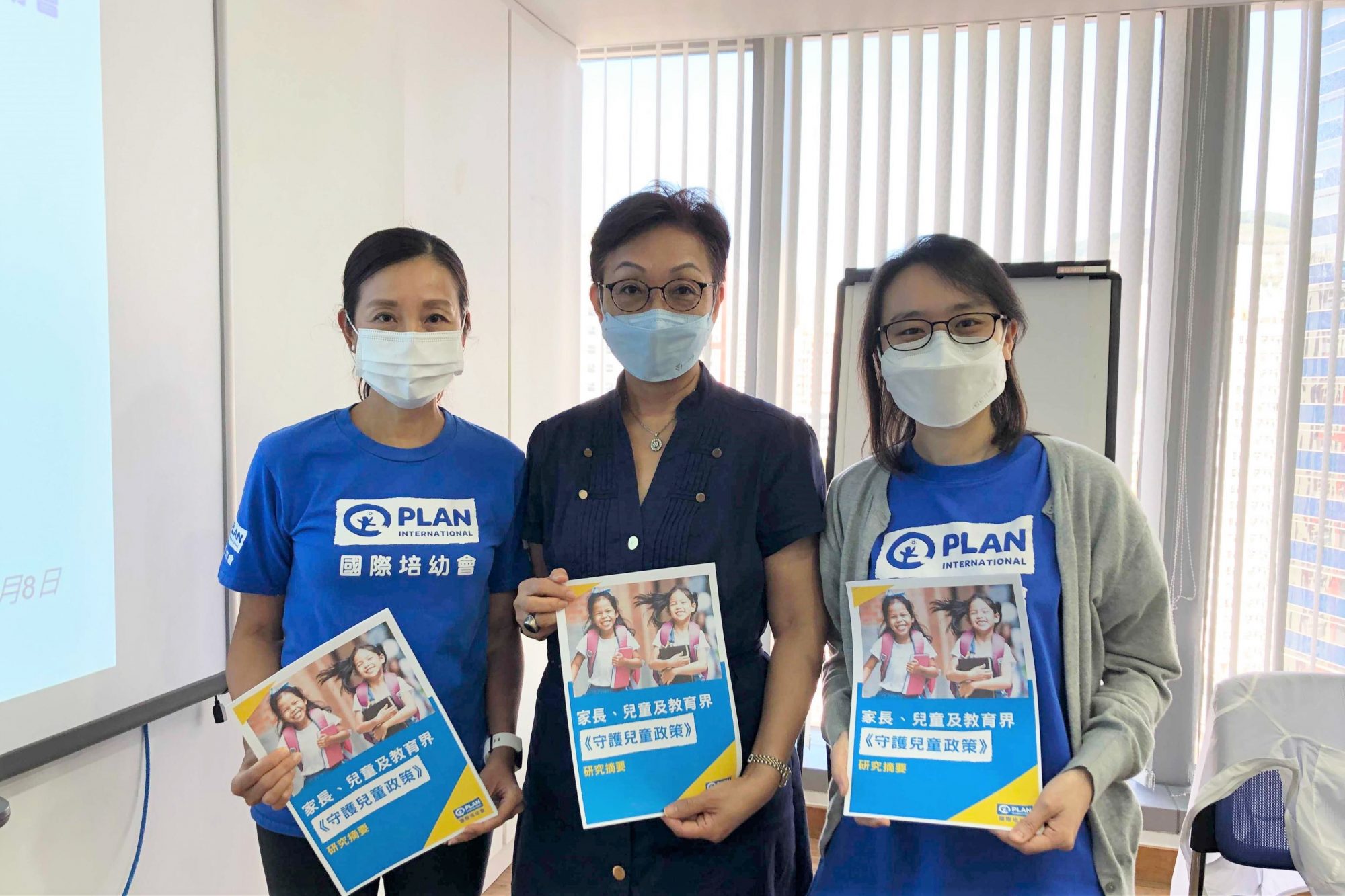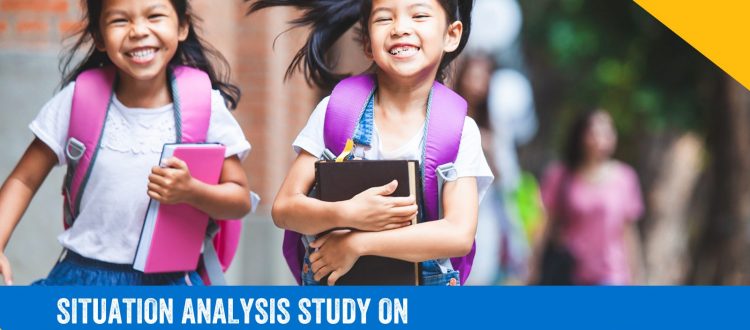Plan International Hong Kong launched the first Child Safeguarding Policy Research in education sector
Plan International Hong Kong launched the first Child Safeguarding Policy Research in education sector
More than 20% of children had been harmed or abused in education institutions with low help seeking awareness
Every 1 in 10 children had been physically punished
Recently, serious child abuse cases have sparked heated discussions in Hong Kong on how to fix loopholes in the child protection system to better protect children from family abuse. However, it is worth noting that children also face serious risks of harm in institutional contexts like schools, private tuition centres and interest classes. To learn the level of child safety in education institutions from children’s perspective, Plan International Hong Kong commissioned Hong Kong Public Opinion Research Institute to conduct the first-ever Child Safeguarding Policy Research in education sector from March 2020 to April 2021. Results show that 1 in 5 of children had been harmed or abused in education institutions in the past 6 months. More alarmingly, 1 in 10 of the children had been physically punished in education institutions, although corporal punishment has been banned in schools since 1991. The results indicate that children face significant risks of harm in education institutions and there is an urgent need for education institutions to conduct more child safeguarding measures to reduce risks of harm or abuse to children in the institutions. Surveys were administered to collect opinions from 1424 respondents ( including 513 parents, 501 children and 410 frontline or management staff from the education sector), and interviews and focus groups were conducted to understand opinions from the above stakeholders more thoroughly.
Child Safeguarding Policy (CSP) is a set of standards and guidelines about how to make an organisation safe for children in its governance and activities, and ensures the organisation has taken all reasonable steps to ensure children are not exposed to harm as a result of their contacts with the organisation. Given no official Child Safeguarding Policy regulations or framework in Hong Kong, Plan International Hong Kong developed a Child Safeguarding Policy framework with four dimensions and twenty standards following a comprehensive literature review of relevant legal requirements and guidelines from other jurisdictions. The framework was adopted throughout the study and was used to benchmark the implementation of CSP measures in Hong Kong.
Children face substantial risks of harm in education institutions with low helping seeking awareness
Results show that 22.8% of children had encountered at least one kind of harm in schools, private tuition centres or interest classes in the past six months, including ‘having intimate bodily touch with teachers’, ‘physical punishment by teachers’, ‘left out by teachers’ and ‘bullied by peers’. Alarmingly, 1 in 10 of the children respondents (11.2%) had been physically punished by teachers in schools, private tuition centres or interest classes. Out of the children respondents who had encountered harm in education institutions, about half (48.2%) of them had never told anyone else about their experience, reflecting that they have a low awareness of seeking help.
Ms. Rosa Wai Chun CHOW, President of Hong Kong Early Childhood Educators Association, expressed that ‘Although educators have long been considered as an important stakeholder in uncovering family child abuse cases, research results indicate that children also face risks of harm in schools. Therefore, the education sector should lead by example to reduce risks of harm to children by establishing Child Safeguarding Policy in their institution.’ She further expressed that establishing Child Safeguarding Policy is an important step in creating an enabling environment for child-related workers to prevent harm to children. ‘The government is recently exploring the possibility of imposing legal liability on child-related workers who fail to take timely action to protect children, by enacting laws like “failure to protect children bill” or “mandatory reporting”. However, apart from enacting laws, the more pressing issue is to create an enabling environment for child-related workers to take reasonable steps in safeguarding children. If organisations can establish their own Child Safeguarding Policy, it would help the organisation and their staff in preventing child abuse from arising in the institution, and could help ensure that cases of institutional child abuse would be handled properly.’
Although teachers care about safeguarding children, schools should establish a clear Child Safeguarding Policy to protect interests of teachers and children
Among the education sub-sectors, kindergartens scored the highest (14.8) for its implementation of the 20 CSP standards, followed by primary schools (13.0), secondary schools (12.1) and private tuition centres (8.7). Among the four CSP dimensions, the education sector performed the best in ‘Procedures’ with the total average score of 7.2 (over 10). On the other hand, the sector’s performance is the weakest in ‘Accountability’, with the total average score of 3.8.
Dr. Kanie Siu, the Chief Executive Officer of Plan International Hong Kong, expressed that, ‘Our in-depth interviews with teachers found that many frontline teachers do care about children’s safety and well-being, and have a high awareness on their responsibility in safeguarding children. They nevertheless reflected that there was inadequate training and support from schools, making it hard for them to know the school’s expectations on safeguarding children in practice. Many teachers therefore reported difficulties in protecting their reputation when they were taken to task, and encountered challenges in intervening in incidents of harm to children in their schools.’
‘Results indicate that most of the parents (>85%) expressed that if an organisation has implemented relevant child safeguarding measures, it would enhance their motivation in choosing its courses or programmes for their children. The results reflect that Child Safeguarding Policy does not only protect teachers’ reputation, but is also a boon to enhance the organisation’s image.’
Call for the government and parents to join hands in encouraging the adoption of Child Safeguarding Policy
The government should encourage and support education institutions in safeguarding children. First of all, the Education Bureau and Social Welfare Department should coordinate in providing adequate guidelines for schools to establish a school-based reporting mechanism on suspected child abuse. By incorporating child safeguarding standards into the “Performance Indicators (Kindergartens)” and “Kindergarten Administration Guide” in “Kindergarten Education Scheme”, as well as the “School Administration Guide”, the government could also encourage the education sector to establish their own Child Safeguarding Policy with a set framework of agreed good practices. As legal guardians of children, parents could also help to prevent harm to children by choosing education institutions with relevant child safeguarding measures for their children and thus encouraging a wider adoption of Child Safeguarding Policy in the education sector.

Dr. Kanie Siu (left), the Chief Executive Officer of Plan International Hong Kong, Ms. Rosa Wai Chun Chow(center), President of Hong Kong Early Childhood Educators Association, and Ms. Sabrina Chan(right), Assistant Manager, Research and Advocacy encouraged a wider adoption of Child Safeguarding Policy in the education sector, with the aim of providing a safe environment to prevent maltreatment for all children.
